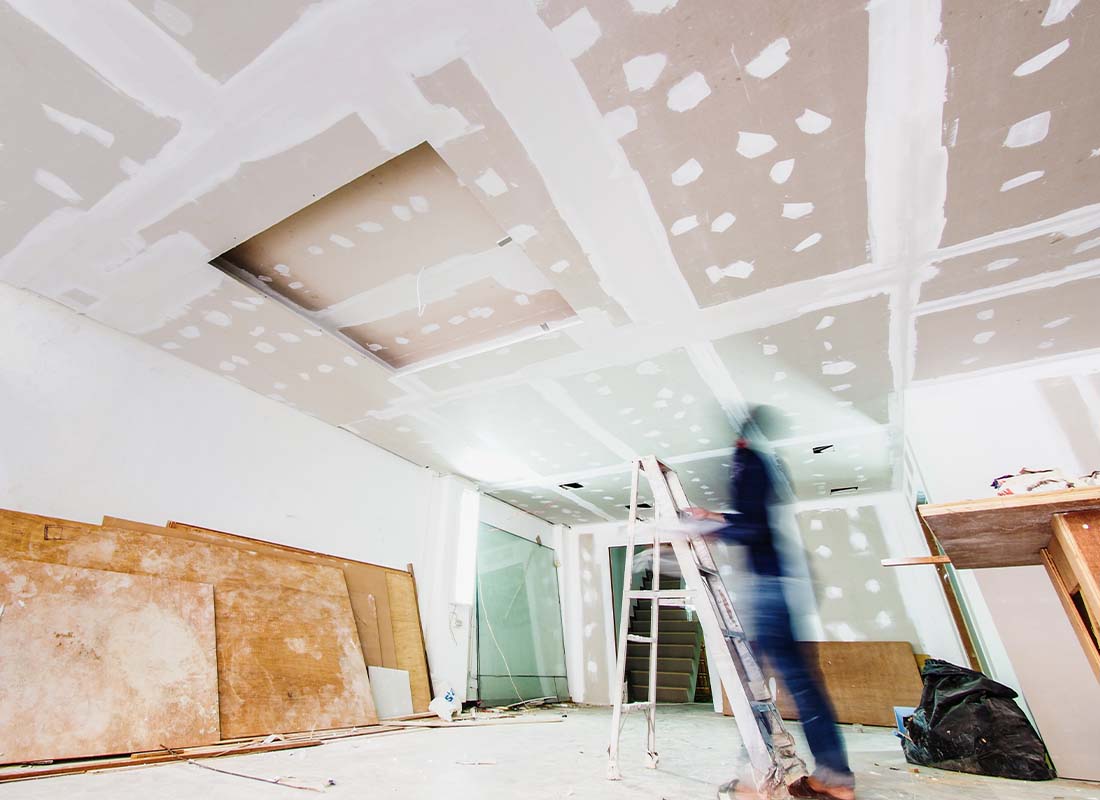Top-Rated Drywall Fort Worth Services for Residential Projects
Top-Rated Drywall Fort Worth Services for Residential Projects
Blog Article
Drywall Installment Facilitated: Tips for Perfect Outcomes
Drywall installment is commonly regarded as a difficult task, yet with the appropriate strategy and expertise, it can come to be a workable undertaking. Mastering methods for cutting, hanging, and completing drywall can significantly impact the outcome.
Selecting the Right Products
Picking the ideal materials for drywall setup is important to accomplishing a resilient and cosmetically pleasing surface. drywall contractor. The primary part, drywall sheets, usually can be found in different densities, with 1/2-inch sheets being typical for interior wall surfaces. For areas requiring added moisture resistance, such as washrooms or cooking areas, consider utilizing green board or concrete board, which are specially designed to hold up against moisture

Additionally, picking the best fasteners-- either screws or nails-- is essential for securing the drywall to the framework. Drywall screws are generally preferred for their holding power and decreased threat of popping. Finally, take into consideration the finishing touches such as primer and paint, which not only improve the appearance but likewise shield the drywall from moisture and wear.
Preparing the Setup Location
Before starting the drywall installation process, it is important to prepare the installation location extensively. A clean workspace minimizes the risk of damage to existing things and allows for efficient movement throughout setup.
Following, evaluate the wall surfaces and ceiling for any imperfections, such as cracks, holes, or mold and mildew. Address these concerns ahead of time; spot any kind of damages and enable sufficient time for repairs to dry. In addition, make certain that electric outlets, switches, and pipes are correctly placed and represented, as this will certainly impact drywall positioning.
Consider the ecological problems as well. A steady temperature and moisture level are important for optimal adhesion and efficiency of the drywall products. If required, use a dehumidifier or heater to create ideal conditions.
Cutting and Hanging Drywall
The key to reliable drywall setup exists in the exact cutting and hanging of the panels. Make use of a straight edge and an energy blade to score the drywall along your measurements, after that break it along the racked up line for a clean break.

Always function from the top down and delegated right, guaranteeing that you keep a staggered pattern to boost security. Properly hanging the drywall establishes the structure for a smooth coating, inevitably leading to remarkable outcomes in your drywall project.
Insulation and Mudding Techniques
While proper cutting and hanging of drywall sets the phase, the following essential action entails mastering taping and mudding techniques to ensure a seamless finish. Insulation is essential for reinforcing joints and avoiding fractures; it includes embedding tape right into the applied joint substance (mud) Start with a quality fiberglass or paper tape, applying the tape over the joint and pushing it right into the wet mud using a taping knife, making sure no air bubbles stay.
When the tape is in area, apply a thin layer of joint compound over the tape, feathering the edges to create a smooth change to the drywall surface. Allow this layer to dry entirely before sanding it gently to remove flaws. Repeat this process, using extra coats of mud as required-- normally two to three coats-- while slowly broadening the application location with each layer to achieve a smooth look.
After the last coat dries out, sand the surface with a fine-grit sandpaper till smooth. drywall contractor. Bear in mind to use a mask during sanding to prevent inhaling dust particles. Mastering these taping and mudding methods is essential for achieving a professional-quality surface in additional reading your drywall setup
Ending Up Touches for Excellence
Achieving a flawless drywall setup surpasses mudding and taping; it finishes in the finishing touches that raise the total appearance. These final steps are important in ensuring a professional-grade surface that improves the appearances of your room.
Begin by sanding the dried joint compound to develop a smooth surface. Utilize a fine-grit sandpaper and a sanding block or post sander for optimum control. Pay particular focus to edges and edges, as these areas tend to need more precise job. After fining sand, wipe down the wall surfaces with a check my reference wet fabric to remove any kind of dust bits, making sure a clean surface for painting.
Next, apply a primer especially made for drywall. This step is important, as it assists secure the joint substance and offers a consistent base for the topcoat. As soon as the primer dries out, examine for any type of blemishes, and retouch as needed.
Verdict
In verdict, effective drywall installment hinges on the mindful selection of materials, complete prep work of the installation location, and accurate execution of cutting and hanging methods. Proficiency of taping and mudding processes is necessary for achieving a smooth coating.
Drywall setup is usually perceived as a challenging task, yet with the right approach and expertise, it can end up being a workable endeavor.Selecting the suitable products for drywall installation is important to achieving a long lasting and cosmetically pleasing surface.Prior to starting the drywall setup process, it is necessary to prepare the installment location thoroughly. Mastering these taping and mudding methods is important for achieving a professional-quality surface in your drywall installation.
In verdict, successful drywall installment pivots on the mindful option of products, thorough prep work of the setup location, and specific execution of cutting and hanging strategies.
Report this page